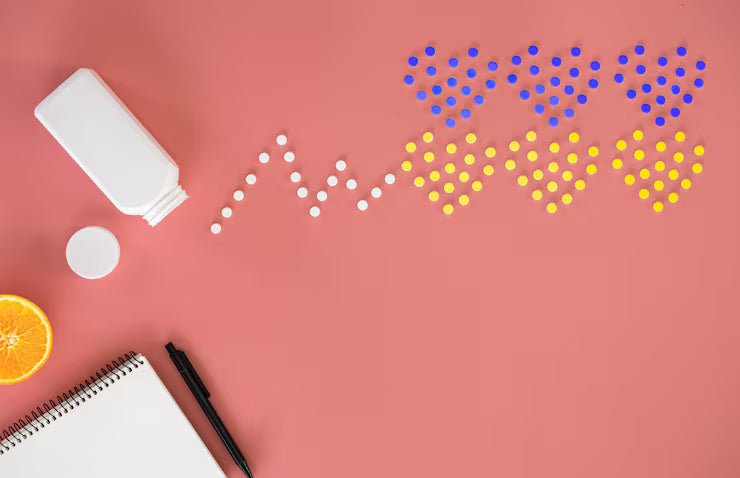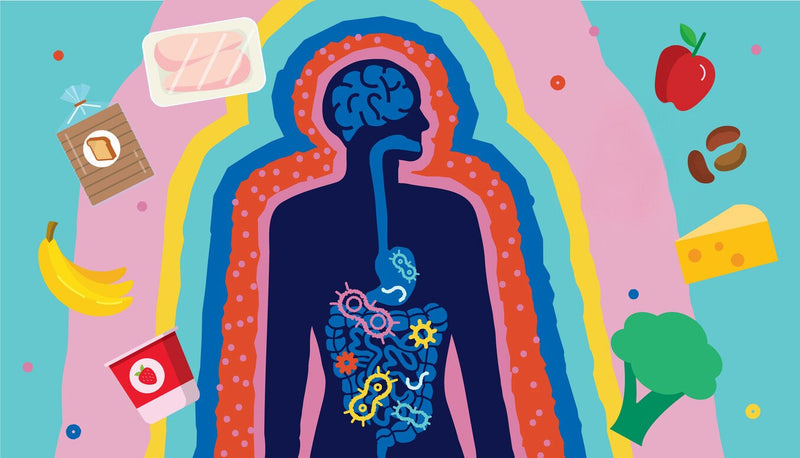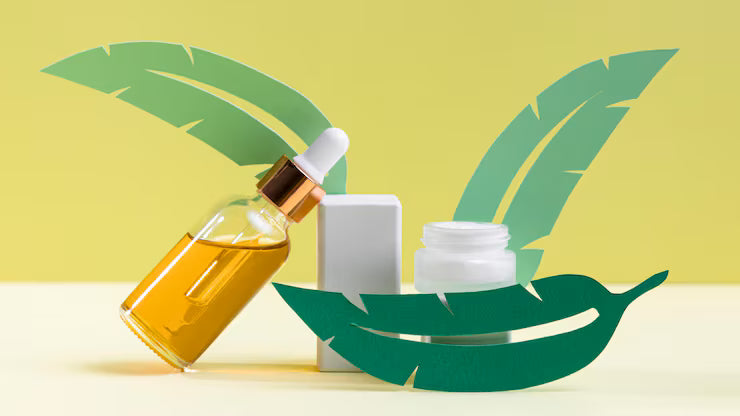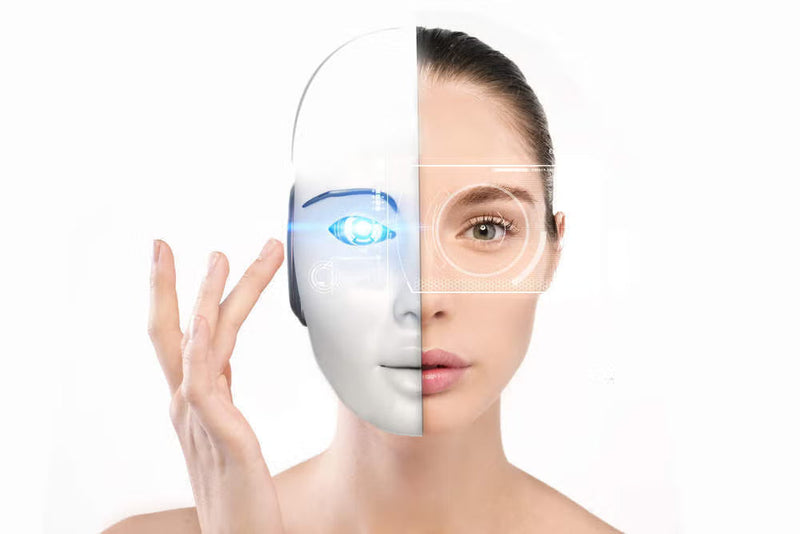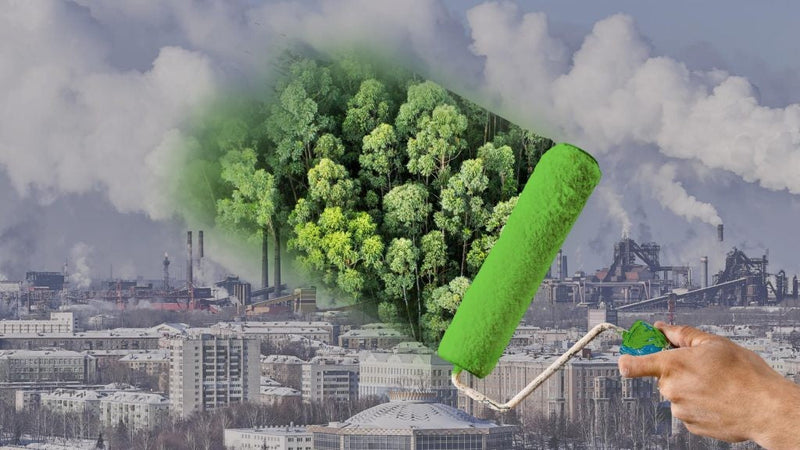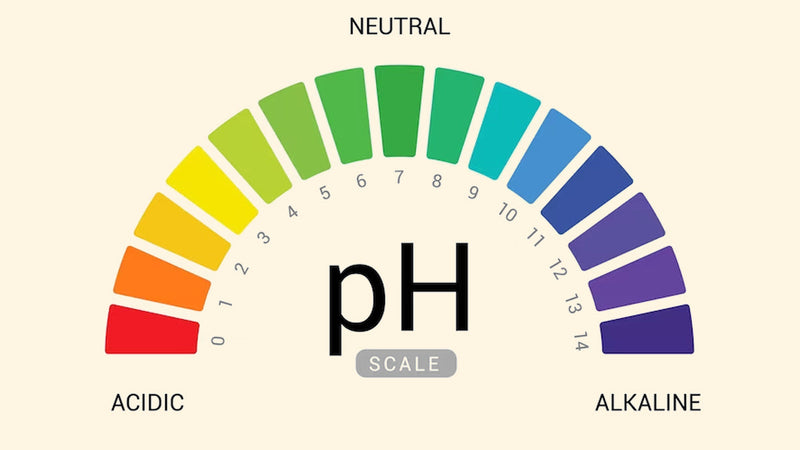

Sustainability in Beauty: From Refillable Packaging to Carbon-Neutral Labs
How the beauty industry is transforming to protect our planet while delivering exceptional products
The beauty industry has reached a critical inflection point. With global cosmetics production generating over 120 billion units of packaging annually and contributing significantly to carbon emissions, the demand for sustainable practices has never been more urgent—or more achievable.
For decades, beauty products epitomized disposable culture. Single-use packaging, plastic waste, resource-intensive ingredients, and energy-hungry manufacturing processes defined an industry built more on convenience than conscience. But something fundamental has shifted. Today's consumers demand more than effective products—they want beauty that doesn't cost the earth. And remarkably, the industry is responding with innovations that prove sustainability and quality aren't mutually exclusive.
This transformation extends far beyond simply swapping plastic bottles for glass or adding a recycling symbol to packaging. We're witnessing a complete reimagining of how beauty products are created, packaged, distributed, and ultimately reintegrated into circular systems. From laboratories powered entirely by renewable energy to packaging made from ocean plastic and agricultural waste, from waterless formulations that eliminate shipping weight to refill systems that make single-use containers obsolete—sustainable beauty is rewriting the industry's rulebook.
The stakes are enormous. The beauty and personal care industry produces 77 billion plastic packaging units annually, most of which end up in landfills or oceans. Manufacturing processes consume vast amounts of water and energy. Ingredient sourcing can drive deforestation and habitat destruction. Yet these same problems present opportunities for meaningful change. When an industry touches billions of consumers daily, small improvements multiply into massive environmental impact.
units of beauty packaging produced annually worldwide
of consumers willing to pay more for sustainable beauty products
of beauty packaging is discarded after single use
projected sustainable beauty market value by 2027
The Packaging Revolution
Packaging represents the most visible aspect of beauty's sustainability crisis—and consequently, where some of the most innovative solutions have emerged. The shift from traditional packaging to sustainable alternatives involves not just material substitution but fundamental rethinking of how products are contained, protected, and delivered to consumers.
Refillable Systems
Refillable packaging represents perhaps the most transformative innovation in sustainable beauty. Rather than discarding containers after use, consumers purchase refills that dramatically reduce waste. Modern refill systems use magnetic closures, pump mechanisms that transfer product without mess, and cartridge designs that make refilling as convenient as buying new products. Some brands offer mail-back programs where empty containers are cleaned, sterilized, and refilled professionally.
Environmental Impact
Reduces packaging waste by up to 85% over a product's lifecycle while cutting manufacturing emissions by 70%
Ocean Plastic Recovery
Innovative brands are creating packaging from plastic recovered from oceans and waterways. This serves the dual purpose of cleaning marine environments while creating functional, attractive packaging. The plastic undergoes thorough cleaning and processing to meet safety standards for cosmetic packaging. Some companies partner with coastal communities, creating employment through beach cleanup efforts while sourcing their packaging materials.
Environmental Impact
Removes harmful plastic from marine ecosystems while reducing demand for virgin plastic production
Biodegradable Materials
Packaging made from mushroom mycelium, seaweed, bamboo, and agricultural waste offers genuine end-of-life biodegradability. These materials decompose naturally within months rather than centuries, and their production requires minimal resources compared to traditional packaging. Mycelium packaging, grown from fungal roots, can be molded into any shape and protects products as effectively as styrofoam while completely biodegrading in home compost.
Environmental Impact
Completely eliminates persistent plastic pollution while utilizing agricultural byproducts that would otherwise be waste
Solid Formulations
Solid bars for shampoo, conditioner, cleansers, and even serums eliminate the need for plastic bottles entirely. These concentrated products come in minimal, often compostable packaging like paper or cardboard. Beyond packaging benefits, solid formulations are significantly lighter and more compact, reducing transportation emissions. Many solid products outlast multiple bottles of their liquid equivalents, providing superior value alongside environmental benefits.
Environmental Impact
Eliminates plastic bottles completely while reducing shipping emissions by up to 60% due to reduced weight and volume
Post-Consumer Recycled Materials
Packaging made from post-consumer recycled (PCR) plastic gives new life to materials that have already been used and recycled. High-quality PCR plastic can look identical to virgin plastic while reducing the environmental footprint significantly. Advanced recycling technologies now allow PCR plastic to meet the high standards required for cosmetic packaging, including clarity, color consistency, and safety requirements. Some brands achieve 100% PCR content in their packaging.
Environmental Impact
Reduces virgin plastic production while creating demand for recycled materials, strengthening recycling infrastructure
The Circular Beauty Economy
The most innovative packaging solutions embrace circular economy principles where nothing becomes waste. Products are designed from the outset for disassembly, with different materials easily separated for recycling or composting. Some brands offer take-back programs with incentives, ensuring packaging returns to the supply chain rather than ending in landfills. This circular approach transforms waste from an end-point into a resource for new products.
Carbon-Neutral Manufacturing
While packaging captures consumer attention, manufacturing represents where beauty's largest environmental impact occurs. The energy required to produce, mix, heat, cool, and package beauty products, combined with emissions from ingredient sourcing and transportation, creates a substantial carbon footprint. Progressive brands are reimagining manufacturing from the ground up to minimize or eliminate these emissions.
Carbon-neutral labs and manufacturing facilities represent the cutting edge of sustainable beauty production. These facilities operate entirely on renewable energy—solar panels, wind turbines, geothermal systems, or purchases of renewable energy credits. Beyond energy, carbon-neutral manufacturing addresses water usage, waste generation, and supply chain emissions. Some facilities capture and reuse water, generate zero landfill waste, and source ingredients from suppliers who meet rigorous sustainability standards.
Renewable Energy
Manufacturing facilities powered entirely by solar, wind, or hydroelectric energy eliminate fossil fuel dependence. On-site solar installations provide power during peak production hours, while battery storage ensures consistent energy supply. Some facilities generate more energy than they consume, feeding surplus power back into the grid.
Water Conservation
Closed-loop water systems recycle and purify water for reuse in manufacturing processes. Rainwater harvesting captures precipitation for non-potable uses. Waterless formulation technology eliminates or dramatically reduces water content in products, conserving this precious resource while reducing shipping weight and packaging size.
Zero-Waste Operations
Manufacturing facilities that send nothing to landfills achieve this through meticulous waste sorting, composting organic materials, recycling everything possible, and finding creative uses for byproducts. Production scraps become ingredients in other products, packaging materials are fully recyclable, and even cleaning water is purified and reused.
Green Chemistry
Sustainable synthesis methods minimize hazardous chemicals, reduce energy requirements, and maximize atom efficiency where every atom in reactants becomes part of the final product. Enzymatic processes and fermentation replace harsh chemical reactions, producing ingredients at lower temperatures with minimal waste byproducts.
Local Supply Chains
Sourcing ingredients locally reduces transportation emissions dramatically. Regional manufacturing and distribution centers minimize the distance products travel to reach consumers. Cold chain optimization and route planning software reduce fuel consumption in necessary transportation, while electric vehicle fleets eliminate tailpipe emissions entirely.
Biotechnology
Lab-grown ingredients produced through fermentation or cellular agriculture eliminate resource-intensive farming. These bioengineered ingredients require minimal land, water, and energy compared to traditional sourcing while offering superior purity and consistency. Precision fermentation can create rare compounds sustainably at scale.
Evolution of Sustainable Beauty Manufacturing
Early Sustainability Efforts
First major brands begin basic recycling programs and introduce minimal sustainable packaging options. Focus remains primarily on marketing rather than systemic change. Most initiatives are superficial greenwashing rather than meaningful transformation.
Consumer Awareness Grows
Social media amplifies environmental concerns. Consumers begin demanding transparency about ingredients, sourcing, and production. Indie brands built entirely around sustainability principles gain significant market share, forcing established companies to respond seriously.
Innovation Acceleration
Refillable packaging systems become commercially viable. First carbon-neutral manufacturing facilities open. Ocean plastic packaging debuts. Waterless formulations move from niche to mainstream. Investment in sustainable beauty startups reaches record levels.
Pandemic Shifts Priorities
COVID-19 heightens awareness of environmental issues and supply chain vulnerabilities. Consumers prioritize products with transparent, ethical production. Direct-to-consumer models reduce intermediary waste. Local sourcing gains importance.
Sustainability Becomes Standard
Major retailers mandate sustainability criteria for brands they carry. Regulations tighten around packaging waste. Biodegradable and refillable options become widely available across price points. Carbon-neutral claims require third-party verification.
Circular Economy Integration
Full circular systems where products are designed for complete recyclability or biodegradability become industry standard. Biotechnology enables sustainable production of previously resource-intensive ingredients. Blockchain tracking provides complete supply chain transparency.
Sustainable Ingredient Sourcing
Beyond how products are made and packaged lies the fundamental question of what goes into them. Ingredient sourcing has historically driven deforestation, habitat destruction, water depletion, and exploitation of agricultural workers. Sustainable beauty addresses these issues through ethical sourcing, regenerative agriculture, and ingredient innovation.
Regenerative agriculture represents a paradigm shift from merely sustaining resources to actively improving them. Unlike conventional farming that depletes soil over time, regenerative practices build soil health, increase biodiversity, sequester carbon, and improve water retention. Beauty brands partnering with regenerative farms create positive environmental impact while securing high-quality ingredients. The practice transforms agriculture from environmental liability into climate solution.
Fair trade and ethical sourcing ensure that the people growing and harvesting ingredients receive fair compensation and work in safe conditions. This extends sustainability beyond environmental concerns to social responsibility. Brands that establish long-term relationships with farming communities, pay premium prices for quality, and invest in community development create sustainable supply chains that benefit all stakeholders.
Regenerative Farming
Agricultural practices that restore soil health, increase biodiversity, and sequester carbon while producing superior ingredients
Fair Trade Partnerships
Direct relationships with farming communities ensuring fair wages, safe conditions, and community investment
Biodiversity Protection
Sourcing practices that preserve natural habitats and endangered species rather than contributing to habitat loss
Biotech Alternatives
Lab-grown ingredients that eliminate environmental impact of agriculture while ensuring consistent quality
Water Stewardship
Sourcing from regions with abundant water or using drought-resistant crops to prevent water stress
Traceability Systems
Blockchain and certification systems that verify ingredient origins and sustainable practices throughout supply chains
"Sustainable beauty isn't about making small improvements to a broken system—it's about fundamentally reimagining how products are created, used, and returned to the earth. Every decision, from ingredient sourcing to end-of-life disposal, must be designed with planetary health in mind."
The Consumer's Role
While industry innovation drives sustainable beauty forward, consumer choices ultimately determine which practices become standard. Understanding how to identify genuinely sustainable products, support responsible brands, and minimize personal beauty waste empowers consumers to drive positive change through their purchasing decisions.
Reading beyond marketing claims requires understanding what sustainability certifications actually mean. Third-party certifications like B Corp, Leaping Bunny, COSMOS, and USDA Organic have rigorous standards and verification processes. These seals indicate brands have undergone independent audits rather than making unverified claims. However, smaller brands may lack resources for expensive certifications despite exemplary practices, so examining specific sustainability initiatives remains important.
Evaluating packaging requires looking beyond surface-level green aesthetics. Truly sustainable packaging is either refillable, made from recycled or renewable materials, recyclable in standard municipal systems, or biodegradable. Beware of packaging that looks eco-friendly but isn't actually recyclable, requires specialized facilities unavailable in most areas, or uses more material than necessary for aesthetic purposes.
How to Make Sustainable Beauty Choices
Choose Multi-Use Products
Products that serve multiple purposes reduce total consumption. A tinted moisturizer with SPF replaces three separate products. Concentrated formulas that last longer reduce packaging waste.
Support Refill Systems
Prioritize brands offering refillable packaging even if initial cost is higher. The long-term savings and environmental benefits far outweigh the upfront investment.
Buy What You'll Actually Use
Overconsumption wastes resources regardless of how sustainable individual products are. Purchase mindfully, finish products before buying new ones, and avoid impulse purchases you won't use.
Properly Dispose of Packaging
Clean packaging before recycling. Use TerraCycle or brand take-back programs for items not recyclable in standard systems. Compost truly biodegradable packaging rather than sending it to landfills.
Research Brand Claims
Look for specific, verifiable sustainability information rather than vague green marketing. Check for third-party certifications. Read company sustainability reports. Follow up on promises over time.
Vote With Your Wallet
Support brands genuinely committed to sustainability even if products cost slightly more. Contact brands you love requesting sustainable improvements. Share positive experiences with sustainable products to influence others.
Consider Total Impact
Evaluate the complete lifecycle from ingredient sourcing through manufacturing, packaging, transportation, use phase, and disposal. The most sustainable choice considers all factors, not just one aspect like packaging.
Overcoming Sustainability Challenges
Despite remarkable progress, sustainable beauty faces legitimate challenges that require acknowledgment and ongoing innovation. Understanding these obstacles helps consumers maintain realistic expectations while supporting brands working to overcome them.
Cost remains a significant barrier. Sustainable materials, ethical sourcing, renewable energy, and smaller production runs all increase expenses. While these costs reflect true environmental and social costs that conventional products externalize, they make sustainable options less accessible to budget-conscious consumers. The industry must continue innovating to bring costs down without compromising sustainability standards.
Performance perception presents another challenge. Some consumers believe sustainable products sacrifice efficacy for environmental benefits. While this perception is increasingly outdated—modern sustainable formulations often outperform conventional alternatives—overcoming it requires consistent quality and transparent communication about ingredient functionality.
Infrastructure limitations constrain what's possible. Recycling facilities that can process certain materials don't exist everywhere. Compostable packaging requires industrial composting unavailable in many regions. Refill stations need physical retail presence. These systemic issues require collaboration between brands, retailers, municipalities, and waste management systems.
⚠️ Beware of Greenwashing
Not all sustainability claims are genuine. Watch for vague terminology like "eco-friendly" or "natural" without specifics, emphasis on one green feature while ignoring major environmental impacts, absence of third-party verification, or marketing that promises more than the product delivers. Genuine sustainability is specific, verified, and transparent.
Traditional Packaging
Virgin plastic containers used once and discarded. Over 70% ends up in landfills or oceans. Requires petroleum extraction and energy-intensive manufacturing.
Sustainable Packaging
Refillable systems, recycled materials, or biodegradable alternatives. Designed for circular economy where materials remain in use indefinitely or return safely to nature.
Traditional Manufacturing
Powered by fossil fuels. High water consumption. Linear production creating significant waste. Long supply chains with substantial transportation emissions.
Sustainable Manufacturing
Renewable energy powered. Water recycling systems. Zero-waste operations. Local sourcing minimizing transportation. Carbon-neutral or carbon-negative operations.
Traditional Sourcing
Industrial agriculture depleting soil. Ingredients requiring extensive resources. Supply chains lacking transparency. Potential for exploitation of workers and environments.
Sustainable Sourcing
Regenerative agriculture building soil health. Biotech alternatives eliminating environmental impact. Fair trade partnerships. Complete supply chain traceability and transparency.
The Future of Sustainable Beauty
Current sustainable beauty practices, impressive as they are, represent just the beginning. Emerging technologies and evolving consumer consciousness promise even more dramatic transformations in how beauty products are created, distributed, and integrated into circular systems.
Artificial intelligence will optimize every aspect of sustainable beauty. Machine learning algorithms will design formulations that minimize waste, predict ingredient needs to prevent overproduction, optimize supply chains for minimal emissions, and personalize products to reduce consumption. AI-powered systems will identify the most sustainable ingredient alternatives and manufacturing processes more efficiently than human researchers alone.
Biotechnology will advance from creating individual sustainable ingredients to producing entire formulations through fermentation and cellular agriculture. This could eliminate traditional manufacturing entirely for certain products, dramatically reducing energy use, waste, and environmental impact. Precision fermentation might produce personalized skincare bacteria that live on your skin, eliminating the need for daily product application.
Packaging innovation will continue advancing toward true circularity. Edible packaging that dissolves when exposed to water, living packaging that biodegrades while nourishing soil, and smart packaging that communicates with recycling systems to ensure proper disposal represent just some possibilities on the horizon. The concept of packaging waste may become obsolete as materials seamlessly integrate into circular systems.
Blockchain technology will provide unprecedented transparency, allowing consumers to trace every ingredient from source to finished product. This visibility will make greenwashing impossible while rewarding genuinely sustainable practices. Consumers will be able to verify sustainability claims instantly, creating powerful incentives for brands to exceed environmental standards rather than merely meeting them.
Imagining 2030: The Sustainable Beauty Standard
By 2030, sustainable beauty won't be a niche or premium category—it will be the standard. All packaging will be refillable, recyclable, or biodegradable. Manufacturing will be carbon-negative, actively removing carbon from the atmosphere. Ingredients will come from regenerative agriculture or sustainable biotechnology. Products will be personalized to minimize waste. And consumers will have complete transparency about every product's environmental and social impact. This isn't utopian fantasy—it's the inevitable evolution of an industry responding to planetary necessity and consumer demand.
The Business Case for Sustainability
Beyond moral imperatives, sustainable beauty makes compelling business sense. Brands embracing sustainability report stronger customer loyalty, higher profit margins, better employee retention, and increased resilience against supply chain disruptions and regulatory changes. Sustainability isn't a cost center—it's a competitive advantage.
Consumer demand for sustainable products continues accelerating. Studies consistently show that over 70% of consumers prefer sustainable options, with majorities willing to pay premium prices for genuinely eco-friendly products. Younger consumers, who will dominate purchasing power in coming decades, make sustainability a non-negotiable requirement. Brands ignoring this shift risk obsolescence.
Operational efficiency improves through sustainability. Reducing waste cuts costs. Energy efficiency lowers utility bills. Simplified packaging reduces material expenses. Local sourcing decreases transportation costs while increasing supply chain resilience. Many sustainability initiatives pay for themselves through operational savings while simultaneously reducing environmental impact.
Regulatory trends favor sustainable business. Governments worldwide are implementing extended producer responsibility laws, plastic taxes, carbon pricing, and sustainability disclosure requirements. Brands built around sustainability are prepared for these regulations, while conventional brands face expensive retrofits. Proactive sustainability provides competitive advantage as regulations tighten.
Join the Sustainable Beauty Movement
Discover our collection of certified sustainable products that prove you don't have to choose between effectiveness and environmental responsibility. Beauty that's good for you and good for the planet.
Conclusion: Beauty's Sustainable Transformation
The beauty industry's evolution from environmental liability to sustainability leader represents one of the most remarkable business transformations of the 21st century. What began as niche concern has become mainstream imperative, driven by consumer demand, technological innovation, and growing recognition that business success and planetary health are inseparable.
From refillable packaging that eliminates single-use waste to carbon-neutral laboratories powered by renewable energy, from regenerative agriculture that heals ecosystems to biotechnology that creates ingredients sustainably at scale—sustainable beauty is rewriting what's possible. These innovations prove that environmental responsibility and product excellence aren't competing priorities but complementary goals that strengthen each other.
The journey is far from complete. Challenges around cost, infrastructure, and scaling solutions remain. But the trajectory is clear and momentum is accelerating. Each sustainable innovation makes the next one easier. Each brand that succeeds with sustainability proves the business case, encouraging others to follow. Each consumer who chooses sustainable products sends powerful market signals that drive further transformation.
We stand at a pivotal moment where individual choices aggregate into systemic change. Every sustainable beauty product purchased supports brands investing in better practices. Every refill chosen over single-use packaging reduces waste. Every demand for transparency pushes the industry toward greater accountability. The sustainable beauty revolution isn't something happening to consumers—it's something we create together through choices that align personal care with planetary care.
The beauty industry touches billions of people daily. When an industry of that scale transforms, the environmental impact is profound. Sustainable beauty isn't just about better products—it's about demonstrating that business can thrive while respecting planetary boundaries. It's about proving that we can have the effective, luxurious, innovative products we love while ensuring a healthy planet for future generations. That's beauty worth celebrating.











